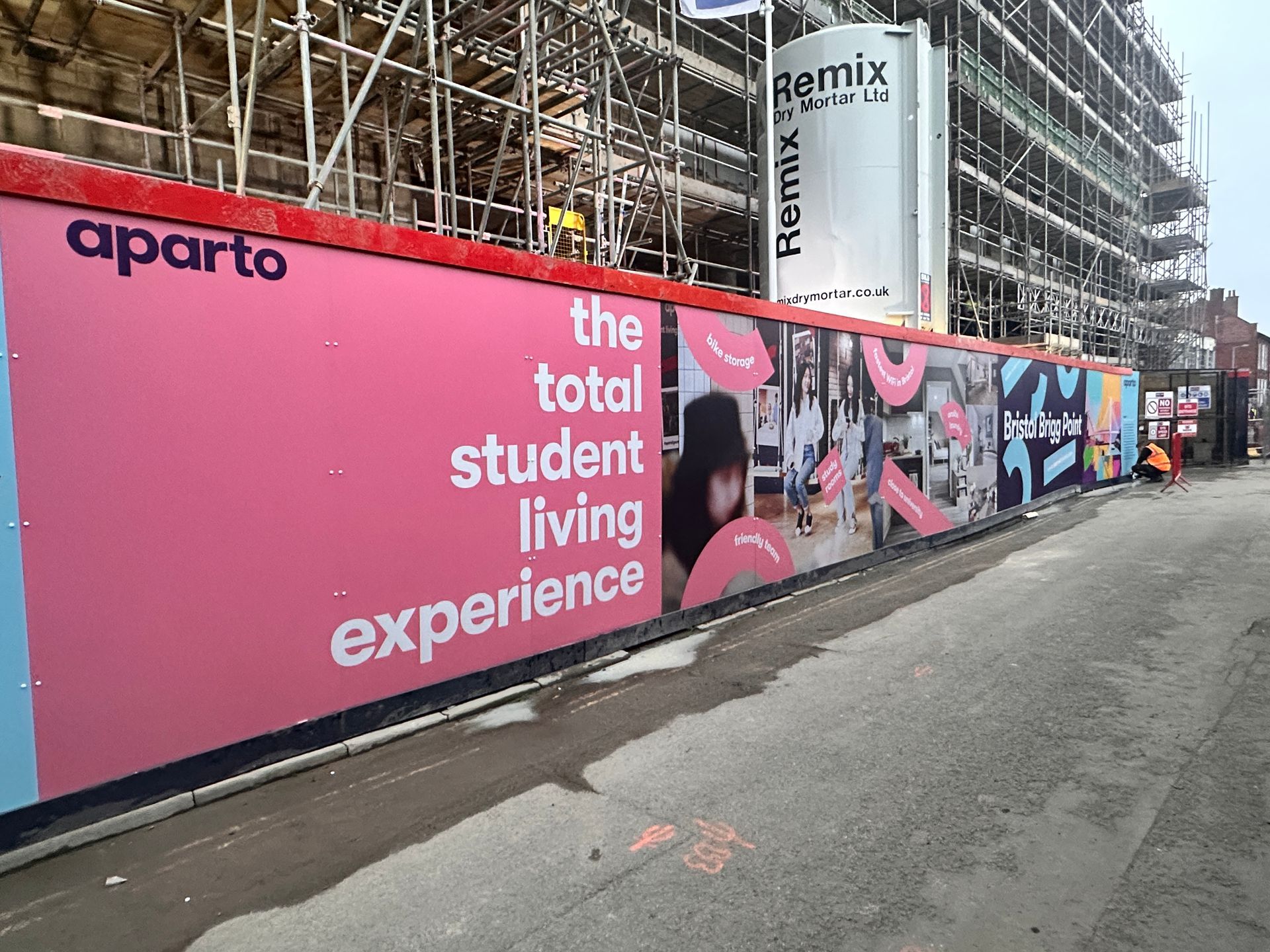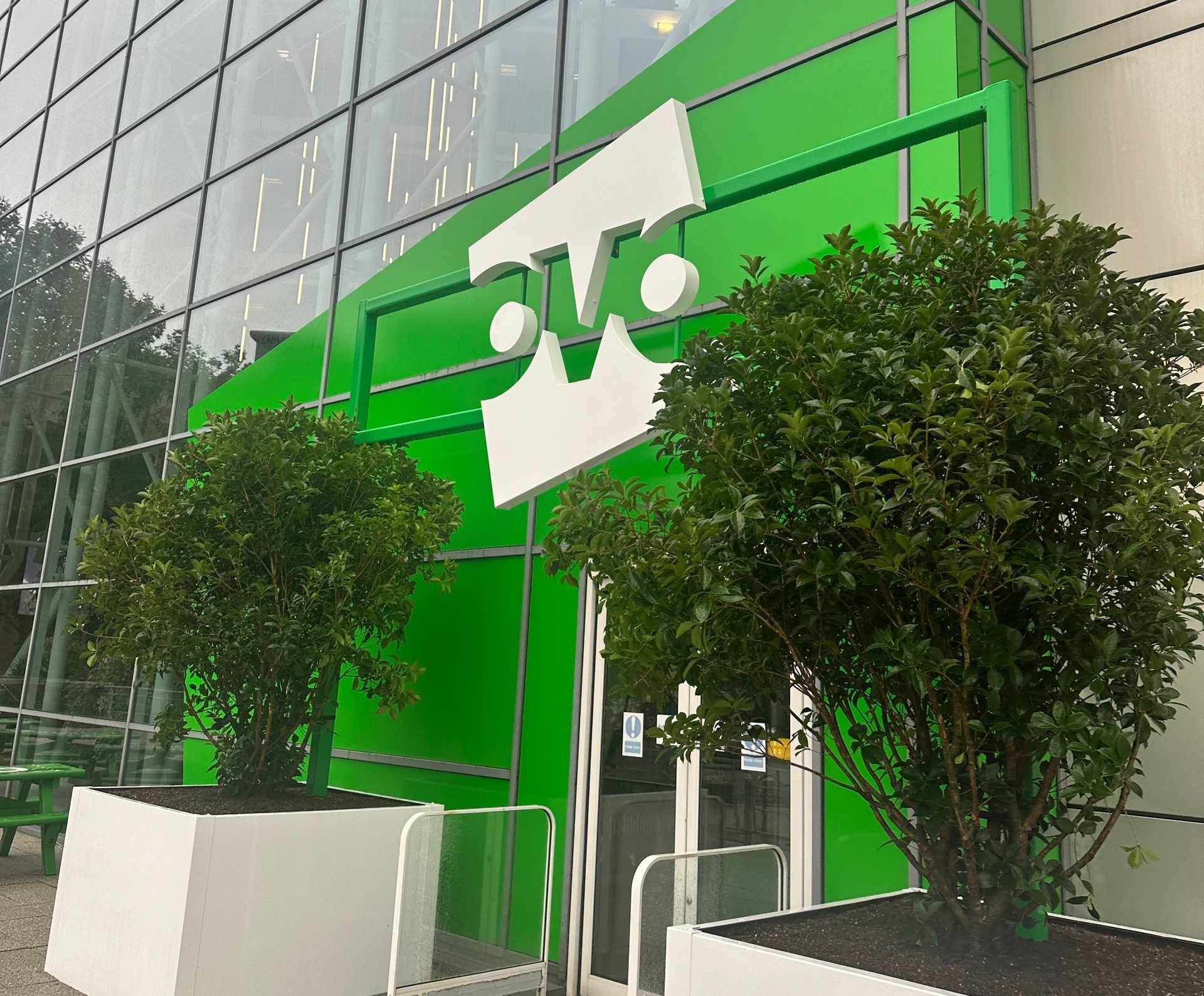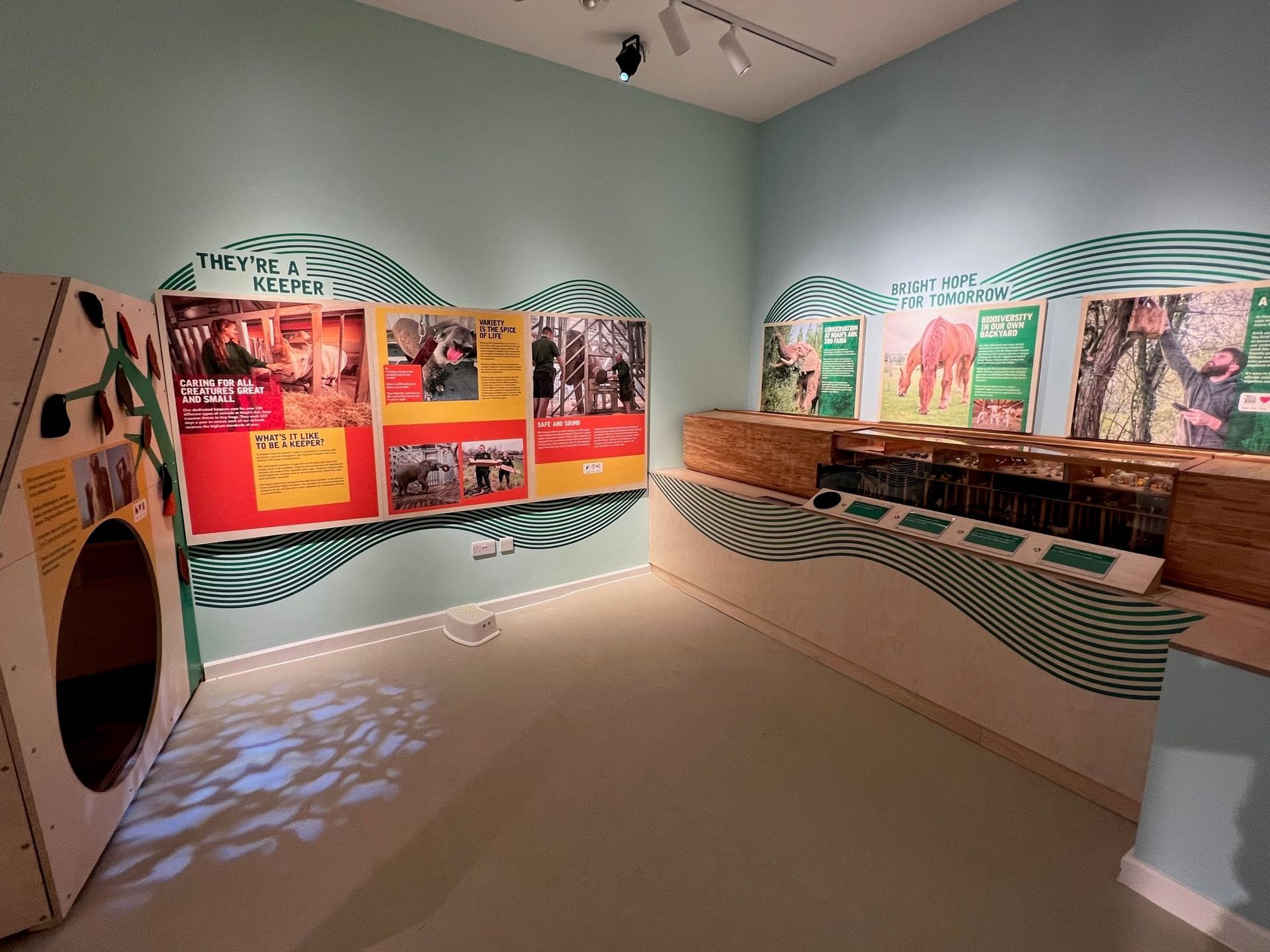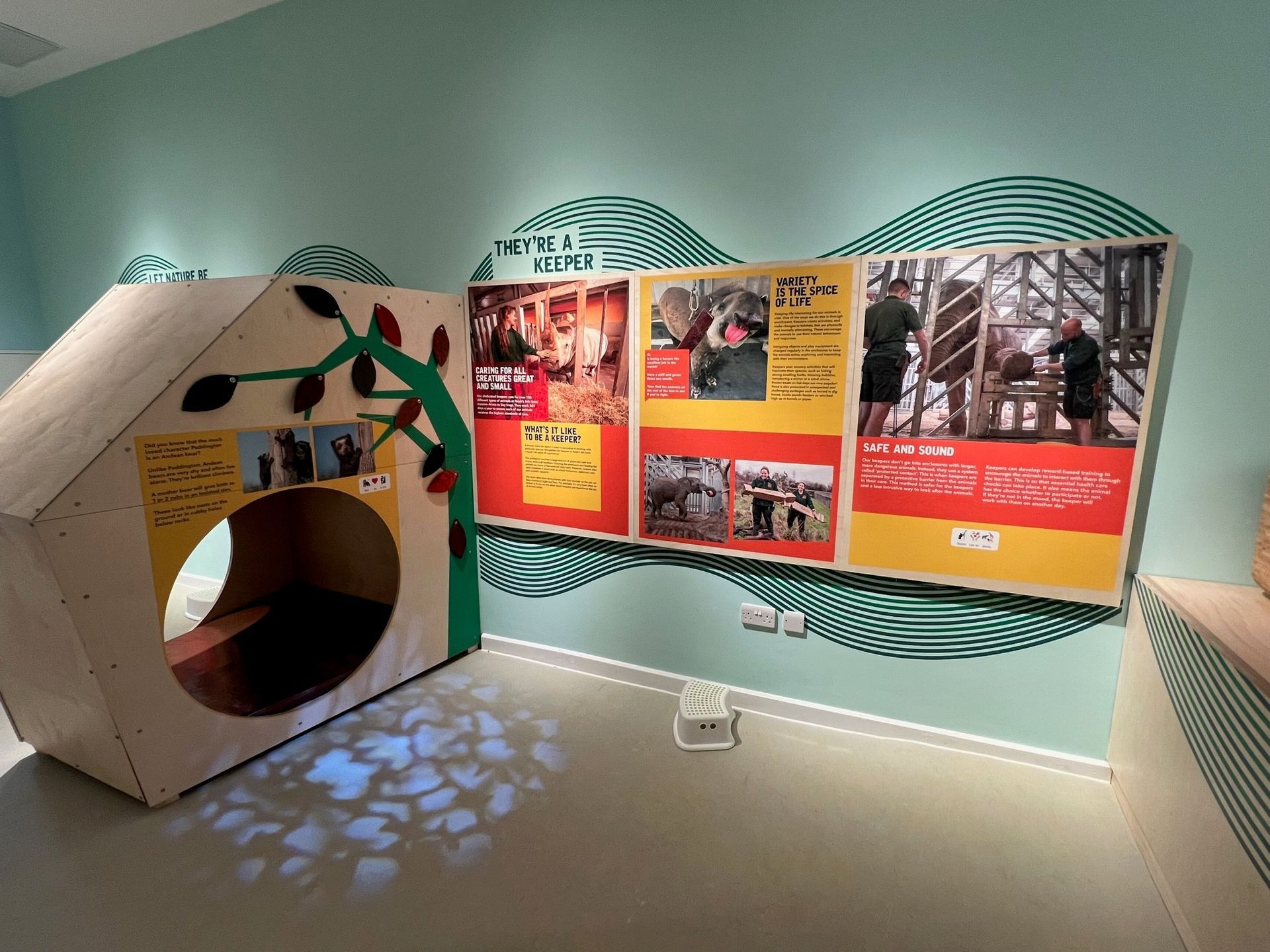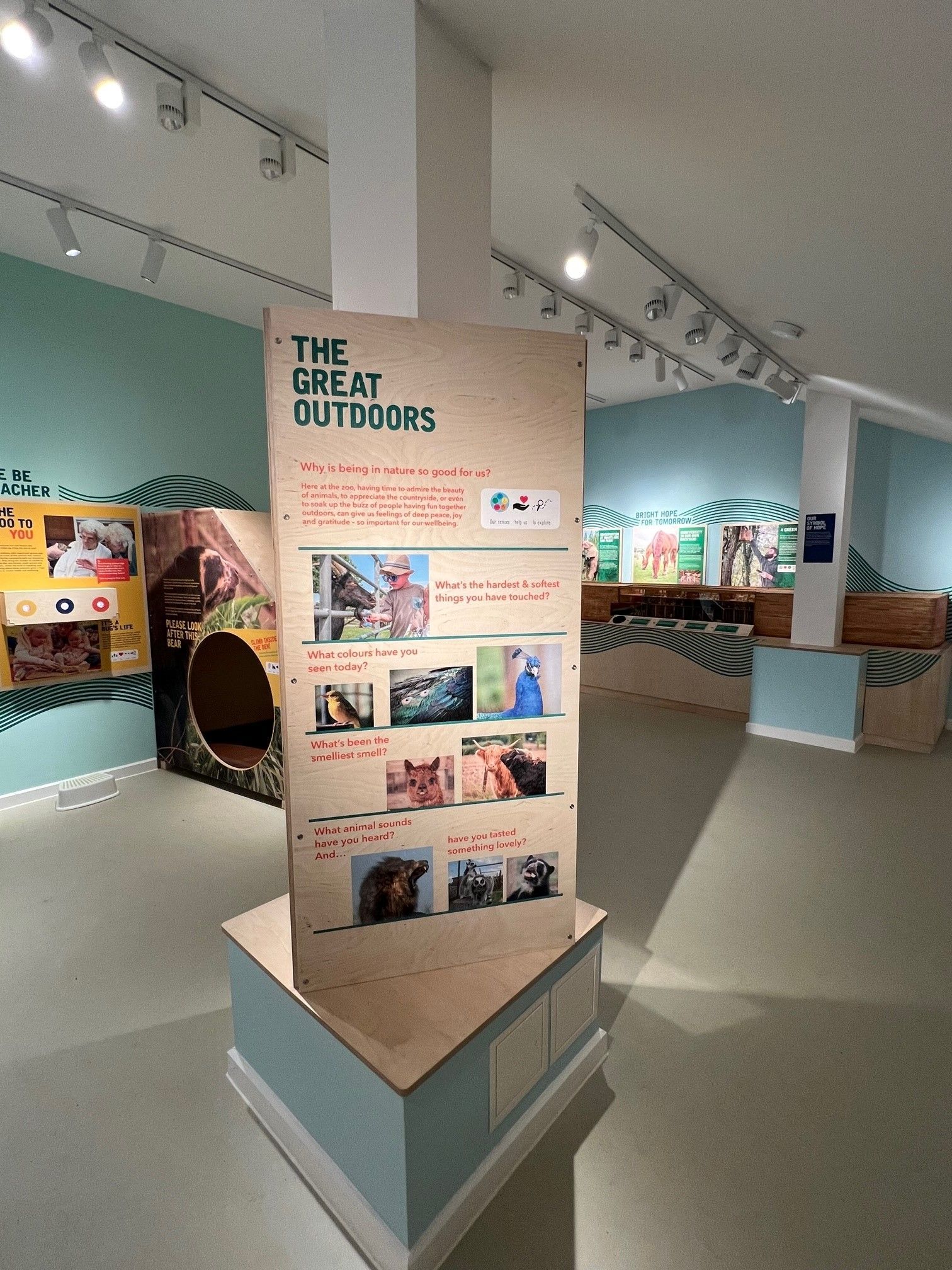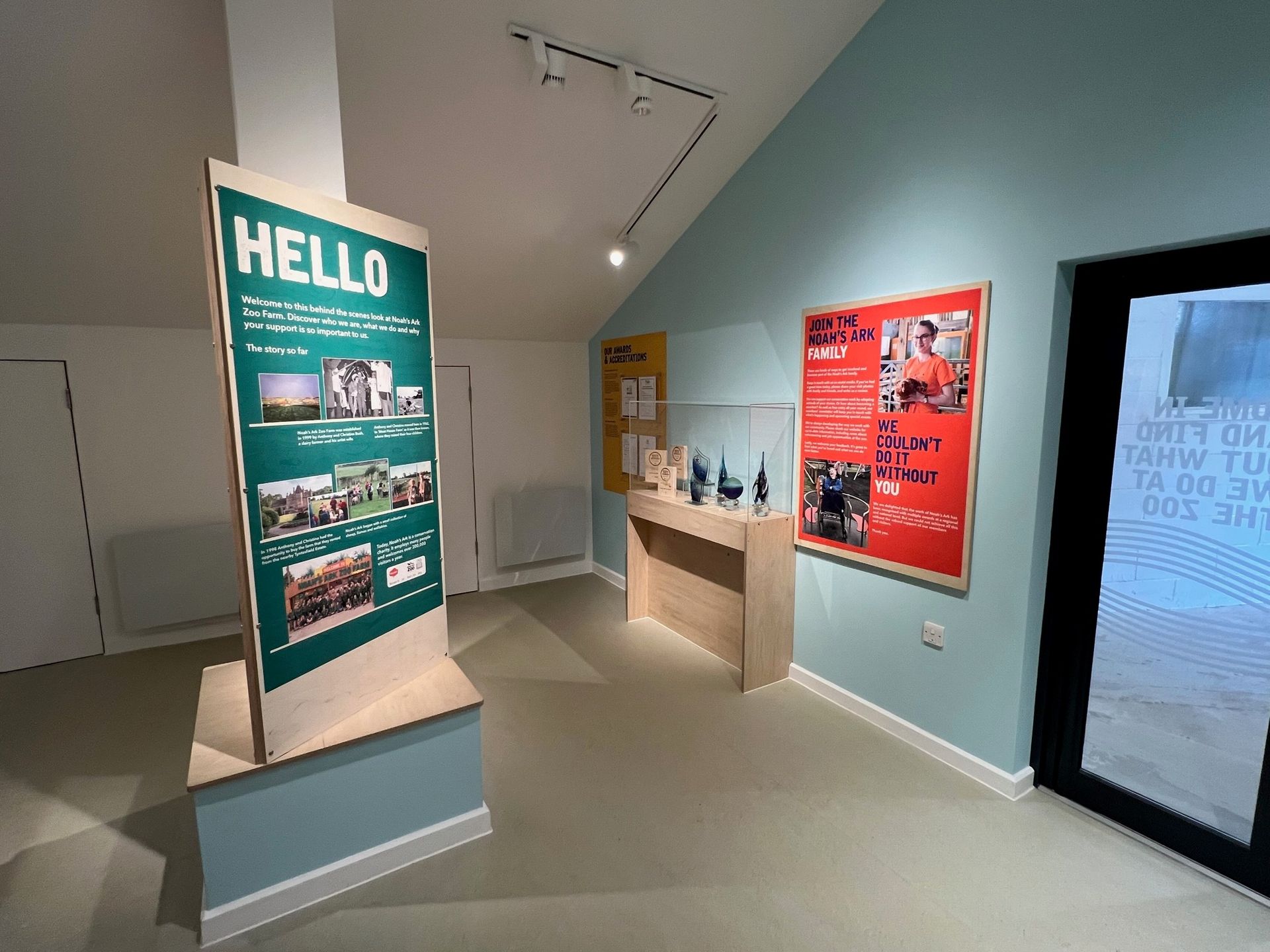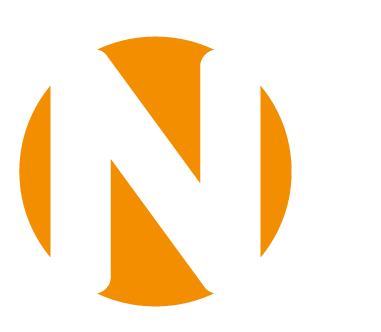Sometimes the solution needs to fit the venue, which is why these printed plywood boards were perfect for a new exhibition for Noah's Ark Zoo Farm.
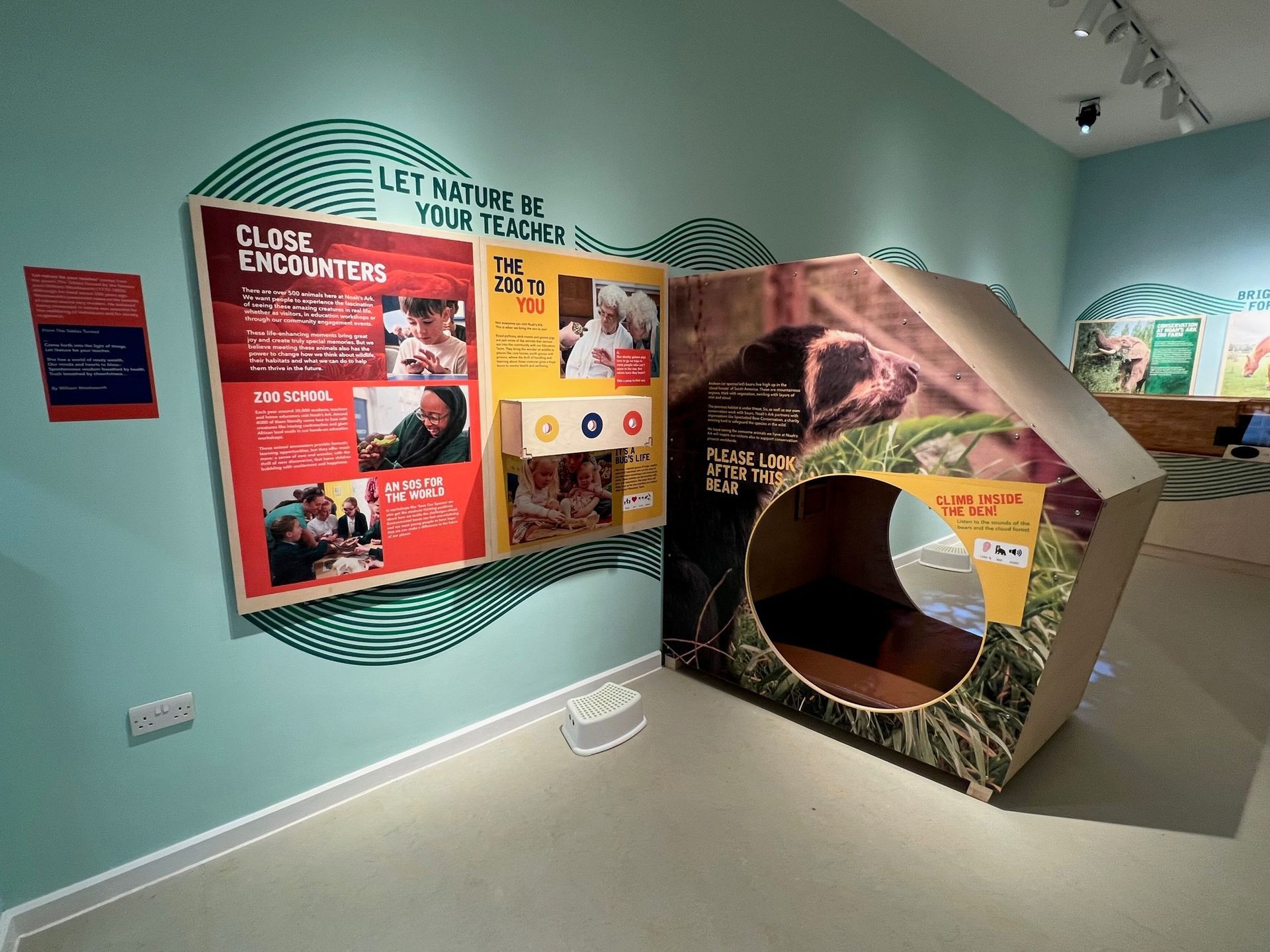
Printing directly onto plywood boards can be a unique and exciting way to display artwork or information for an exhibition. In this blog post, we will discuss how we used this technique to create stunning displays for this exhibition for Noahs Ark Zoo Farm.
The exhibition focusses on Noah Ark Zoo Farm's story, and is designed to be as accessible and inclusive as possible with accessible sentences, level access, sensory experiences and more.
The first step in this process was to select high-quality plywood boards. We chose plywood because it is durable, has a natural wood grain texture, and is relatively lightweight. It is important to note that the wood grain will show through the printed design, adding an organic element to the final product. We made sure to select boards that were free of any large knots or blemishes that could impact the final print quality.
Direct Print
The next step was to print directly onto the plywood boards. We used a specialised machine, the HP Latex r2000 Printer that is designed to handle irregular surfaces like wood. We loaded the boards onto the printer bed and adjusted the print settings to ensure that the ink was applied evenly across the surface of the wood.
We used high-quality, latex based Eco inks. We chose to print in full colour plus white ink, allowing us to create bold and eye-catching designs that would draw visitors' attention to the exhibition.
Cut to shape
After the printing was complete, we cut the board to size and in some cases to shape on our Zund cutter. Finally we used a liquid laminate evenly applied across the board to protect the print and to add a level of UV protection to resist fading over time. We were thrilled with the final result - the prints had a beautiful, natural texture thanks to the wood grain showing through, and the colours were vibrant and eye-catching.
One of the biggest advantages of printing directly onto plywood boards is that they can be displayed without frames, making them a cost-effective option for exhibitions. We chose to mount our boards onto the walls using simple brackets, allowing visitors to see the full surface of the prints without any obstruction.
In Conclusion
In conclusion, printing directly onto plywood boards can be a fantastic way to create unique and eye-catching displays for an exhibition. With the right materials and equipment, this technique is relatively easy to execute and can produce stunning results. We hope that this blog post has provided you with some inspiration for your next exhibition.
ASK US ABOUT
PRINTED EXHIBITION DISPLAYS
Enquiry Form
SHARE THIS POST
